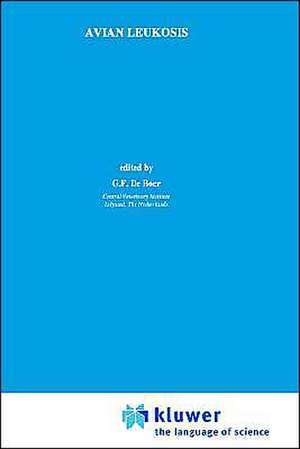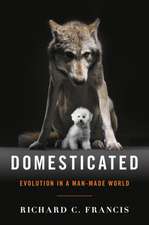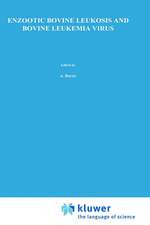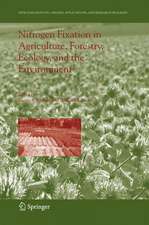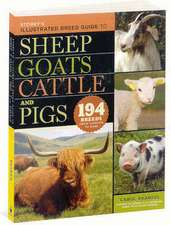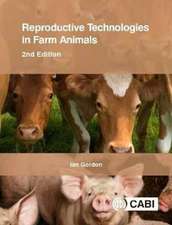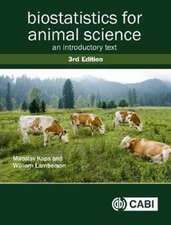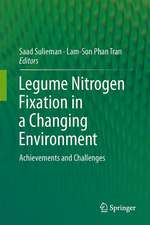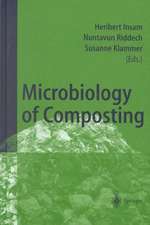Avian Leukosis: Developments in Veterinary Virology, cartea 4
Editat de G.F. de Boeren Limba Engleză Hardback – 30 apr 1987
| Toate formatele și edițiile | Preț | Express |
|---|---|---|
| Paperback (1) | 1410.41 lei 6-8 săpt. | |
| Springer Us – 23 noi 2011 | 1410.41 lei 6-8 săpt. | |
| Hardback (1) | 1418.27 lei 6-8 săpt. | |
| Springer Us – 30 apr 1987 | 1418.27 lei 6-8 săpt. |
Preț: 1418.27 lei
Preț vechi: 1492.91 lei
-5% Nou
Puncte Express: 2127
Preț estimativ în valută:
271.38€ • 283.34$ • 224.61£
271.38€ • 283.34$ • 224.61£
Carte tipărită la comandă
Livrare economică 04-18 aprilie
Preluare comenzi: 021 569.72.76
Specificații
ISBN-13: 9780898388725
ISBN-10: 0898388724
Pagini: 292
Ilustrații: XII, 292 p.
Dimensiuni: 155 x 235 x 26 mm
Greutate: 0.63 kg
Ediția:1987
Editura: Springer Us
Colecția Springer
Seria Developments in Veterinary Virology
Locul publicării:New York, NY, United States
ISBN-10: 0898388724
Pagini: 292
Ilustrații: XII, 292 p.
Dimensiuni: 155 x 235 x 26 mm
Greutate: 0.63 kg
Ediția:1987
Editura: Springer Us
Colecția Springer
Seria Developments in Veterinary Virology
Locul publicării:New York, NY, United States
Public țintă
ResearchCuprins
1.A historical review of avian retrovirus research.- 1. The origins of avian retrovirus research 1908-1945.- 2. Avian retrovirus research during the period 1945-1960.- 3. Contemporary research with avian retroviruses 1960-1984.- 4. Concluding remarks.- 2.Structure and virus-associated oncogenes of avian sarcoma and leukemia viruses.- 1. Introduction.- 2. Defective leukemia viruses.- 3. Avian sarcoma viruses.- 4. Concluding remarks.- 3.Epizootiology of avian leukosis virus infections.- 1. Introduction.- 2. Virus classification.- 3. Incidence and prevalence.- 4. Modes of natural transmission.- 5. Infection patterns within flocks.- 6. Viral factors influencing infection and disease.- 7. Host genetic factors influencing infection and disease.- 8. Other host factors influencing infection and disease.- 9. Environmental factors influencing infection and disease.- 4.Molecular basis of oncogenesis by non-acute avian retroviruses.- 1. Introduction.- 2. Structure and replication of non-acute retroviruses.- 3. The structure of the long terminal repeat (LTR).- 4. Possible schemes for host oncogene activation by non-acute retroviruses.- 5. B-lymphoma induction by ALV: c-myc activation.- 6. B-lymphoma induction by REV: c-myc activation.- 7. Erythroblastosis induction by ALV: c-erbB activation.- 8. RPV-induced neoplasms.- 9. MAV-induced neoplasms.- 10. Concluding remarks.- 5.Endogenous avian leukemia viruses.- 1. Introduction.- 2. Evidence that normal chickens harbor avian retroviral genes.- 3. The endogenous ALV genome.- 4. Expression of ev genes.- 5. Transcriptional control elements within the long terminal repeat.- 6. Chromosomal distribution of ev genes.- 7. Significance of ev genes among avian species.- 8. Genetic diversity among avian retroviruses.- 9. Biological influences of endogenous proviruses.- 6.Immunology of avian leukosis virus infections.- 1. Introduction.- 2. Neoplastic transformation of lymphoid cells.- 3. Immune response to ALV infection.- 4. Immunosuppression.- 7.Avian sarcomas: immune responsiveness and pathology.- 1. Introduction.- 2. Cellular transformation by avian sarcoma viruses.- 3. Viral-associated antigens.- 4. ASV-induced pathogenesis and immunosuppression.- 5. Development of anti-tumor immunity in tumor-bearing hosts.- 6. The immunogenicity of retroviral envelope glycoprotein.- 7. Characteristics of tumor cell growth in vivo and in vitro.- 8.Virus-cell interactions of avian sarcoma and defective leukemia viruses.- 1. Introduction.- 2. Avian sarcoma viruses.- 3. Pathogenic effects of avian sarcoma viruses in vivo.- 4. Transforming effects of avian sarcoma viruses in vitro.- 5. Defective avian leukemia viruses.- 6. Conclusions and future trends.- 9.The pathogenesis and pathology of neoplasms caused by avian leukosis viruses.- 1. Introduction.- 2. Virus classification.- 3. Factors affecting the pathogenic response.- 4. Classification of leukemias and leukoses.- 5. Other tumors and tumorous conditions.- 6. Non-neoplastic conditions.- 7. Transplantability and development of cell lines.- 8. Lymphoid leukosis.- 9. Erythroblastosis.- 10. Myeloblastosis.- 11. Nephroblastomatosis.- 12. Osteopetrosis.- 13. Concluding remarks.- 10.Differential diagnosis of lymphoid leukosis.- 1. Introduction.- 2. Clinical signs.- 3. Etiology.- 4. Pathogenesis.- 5. Gross pathology.- 6. Microscopic pathology.- 7. Serological and immunological techniques.- 11.Laboratory diagnostic procedures for detecting avian leukosis virus infections.- 1. Introduction.- 2. Collection and handling of specimens.- 3. In vivo assay of RSV and ALV.- 4. In vitro assay ofRSV and ALV.- 5. Production of virus stocks and antiserum.- 6. Tests based on interaction between ALV and RSV.- 7. Tests for ALV based on detection of group-specific antigens.- 8. Detection and distribution of viral antigens in host tissues.- 9. Detection of antibody against subgroup- and group-specific antigens.- 10. Concluding remarks.- 12.Influences of avian leukosis virus infection on production and mortality and the role of genetic selection in the control of lymphoid leukosis.- 1. Introduction.- 2. Frequency of ALV infection.- 3. Effects of ALV infection on production and mortality.- 4. Prospects for the future.- 13.Approaches to control avian lymphoid leukosis.- 1. Introduction.- 2. Detection of congenital ALV transmission.- 3. Prevention of horizontal virus exposure.- 4. LL control by elimination of ALV shedding hens.- 5. Manipulation of the immune response.- 6. Genetic resistance.- 7. Concluding remarks.
